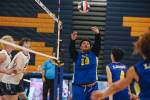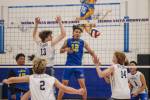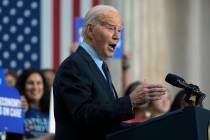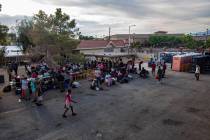Setting the bar: Minority students and admission standards
Six years ago, in 2006, that UNR and UNLV, for the first time in a generation, raised the minimum high school GPA requirement for incoming freshmen, from 2.5 to 2.75.
By the summer of 2007, the Board of Regents announced plans to require incoming freshmen at the two flagship universities to achieve a minimum high school grade-point average of 3.0 – a B average – as of fall, 2008.
Many opposed the changes, arguing they would harm minority students.
“I think that it’s elitist,” said Tom Rodriguez, the executive manager of the Clark County School District’s Diversity and Affirmative Action Programs, said of the higher standards.
Mr. Rodriguez has since 1988 made the argument that most blacks and Hispanics aren’t capable of attaining a 2.75 high school GPA, let alone a 3.0.
In fact, for too long, UNLV and UNR accepted students – minority and otherwise – who had no business graduating from high school, let alone enrolling at a university with doctoral programs. In so doing, the state set up these students for failure. Unprepared for the rigors of university courses, they took up space in lecture halls, then routinely dropped out.
What the toughened academic standards – the GPA requirement required for admission to UNR and UNLV is now 3.25 – accomplished was to divert many of those unprepared students – of whatever race and color – to Nevada State College and the community colleges, where their chances of success were actually higher in a lower-pressure environment.
On Monday, UNR announced that it enrolled the highest percentage of minority students in the history of the school, last year.
Serge Herzog, director of UNR’s Office of Institutional Analysis, said minority students accounted for 26 percent of the total student population during the fall semester; 27 percent during the spring semester. That means the number of minority students climbed by 8 percent, or by about 400 students, Mr. Herzog told the Reno Gazette-Journal.
During the fall semester, 2,032 Hispanic students represented 11.3 percent of the total student population of 18,000. A total of 1,053 Asian students accounted for 5.8 percent, 872 multi-ethnic students represented 4.8 percent, 557 black students accounted for 3.1 percent and 156 American Indian/Alaska native students represented 1 percent of the UNR student body.
UNLV spokeswoman Afsha Bawany said Monday that in their latest sampling, in the fall of 2011, college administrators here in Las Vegas found that 47 percent of UNLV students described themselves as coming from a minority background, up 2 percentage points from the year before. Last October, UNLV ranked among the nation’s 10 most diverse universities for undergraduate students, according to U.S. News & World Report.
So much for the dangerous nonsense that minority students are incapable of meeting reasonably high academic standards.


















